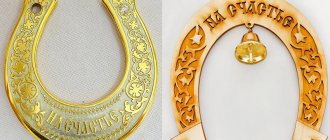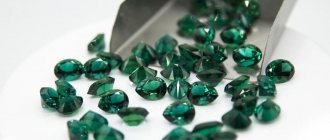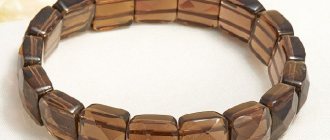| — Greek . ———— An ancient sign of fertility, abundance (Saracen brides wore it as a sign of fertility). Orange (orange) color is associated with fire and luxury (Except in Buddhist countries, where the orange robes of monks symbolize humility). Basic values:
|
China
Yuji is a fruit that brings happiness - a symbol of immortality and good luck.
At the beginning of each year, oranges were brought as a gift to heaven. For this purpose, fruits were sent annually from Fuzhou to Beijing. The tradition of giving oranges for the New Year means a wish and a guarantee of wealth, happiness and success. They are traditionally eaten on the second day of Chinese New Year.
The image of two oranges, two fish in a basket means a wish for happiness every year.
Orange is well known in China, where several types of orange trees grow:
- tangerine, or citrus nobilis;
- a variety with an easily peeled peel, "blood orange", a name suggestive of alchemy, immortality and luck;
- coolie, or citrus aurantium, grows in southern China;
- golden orange, citrus olivoeformis, usually preserved;
- Wenchow orange, a variety with a bitter quinine flavor;
- copt ch'ou ch'eng also has a bitter taste$
- several varieties of citrus decumana, the best of which are grown in Atou.
The taste and golden-yellow zest of the fruit are highly valued. Pharmacists buy it from the population and widely use it to prepare medicines: tincture of the zest serves as a sedative, carminative and expectorant, and promotes digestion. The dried pulp and seeds of the fruit are also used for medicinal purposes.
Orange Dynasty
The Orange-Nassau dynasty ruling today in the Netherlands established itself on the Dutch throne during the first bourgeois revolution in Europe, when at the end of the 16th century. The United Provinces, after a bloody struggle, freed themselves from the rule of the Spanish Habsburgs. Initially, the title of Orange belonged to the rulers of a small duchy in the south of France. Since the word “orange” is translated as “orange,” this fruit, as well as the color orange, became symbols first of the dynasty and then of the Netherlands.
Prince William I of Orange, Stadtholder of the Republic of the United Provinces.
Share link
Emblematics
Orange tree in a box illuminated by the sun.
- Without you I'm dying.
A symbol of the primacy of the divine will, sometimes the overlord.
EMSI 4-14, p.123 Orange tree covered with flowers and fruits.
- Winter will not bare my branches.
A symbol of the fact that the vicissitudes of fate do not harm virtue.
EMSI 23-6, p.200] An orange tree covered with flowers and fruits.
- It promises and fulfills.
A symbol of someone who strictly keeps their word.
The orange tree bears flowers and fruits at the same time: fruits are the fulfillment of promises. EMSI 30-3, p.227 Orange tree covered with fruits and flowers.
See 23-6 EMSI 54-13, p.335]
Root crown
The green rue crown was the traditional symbol of the Saxon dukes and Saxony itself. After the establishment of the Wettin dynasty in the duchy, they adopted this symbol into their coat of arms. Rue itself in Western Europe symbolized innocence, purification, and was used to flavor holy water in churches. Rue was also believed to have the ability to ward off evil spirits and was used in protective rites
Coat of arms of the federal state of Saxony, Germany
MYTHOLOGY
Three golden apples are picked by Aphrodite in the grounds of the temple dedicated to her in Cyprus and given to the young man Hippomenes, responding to his prayer. A young man in love with Atalanta can only marry her by defeating her in a race; meanwhile, no one has yet managed to overtake the girl. On the advice of Aphrodite, the young man, whom Atalanta begins to catch up with, throws a golden apple and Atalanta, surprised by the unusual fruit, stops to pick it up. A technique used three times allows Hippomenes to run first and marry his beloved.
“The three golden apples are three extra months added to the octaeteris (eight-year cycle) to keep the Moon in rhythm with the seasons of the solar year. They fall at Atalanta’s feet every time it seems that she is about to overtake Hippomenes, who personified the Sun. The number of apples means that the Moon will marry the Sun at the end of the eight-year cycle, which it actually does. In the earliest version, the octaeteris - 99 lunar months - lasted slightly longer than 8 years of 365 days each. This small discrepancy, about half a day, is the distance by which Hippomenes overtook Atalanta.”
On about. Sardinia, when the groom’s father sent carts to collect the bride’s dowry, “bouquets of flowers or oranges were attached to the horns of the oxen harnessed.” A clear example of the distortion of original ideas is the carnival character su tiaulu (devil, devil) with an orange. In Christian iconography, the devil was sometimes depicted with oranges strung on horns, wearing a fiery red close-fitting robe , a black mask and a tail.
The custom of decorating the bride with orange flowers (orange blossom) came to England from France around 1820. The orange tree is also used in place of the apple or fig tree when depicting the fall of man in paradise.
Used materials:
Spiced Orange: Pomander Past and Present
Have you ever wondered why for us the New Year is strongly associated with tangerines? It is, of course, impossible to establish this precisely. One version claims that this tradition is quite young - it arose in the 60s, namely in 1963, when a large batch of tangerines was first brought to Leningrad. This happened in December, on the eve of the New Year, when there were practically no fresh fruits on sale, so they were very popular. Since then, tangerines began to be delivered every year at this time (just in time for December they ripened in Abkhazia) and became a symbol of the New Year in our country. It is quite possible that this is exactly what happened, although this is not a very romantic version.
However, some believe that the “citrus” motifs of the New Year appeared much earlier, and came from England, where the Christmas tradition of making so-called “pomanders” has existed for about a hundred years. This is a fruit (usually an orange) studded with clove sticks, which is hung on a Christmas tree or placed on a holiday table.
But the pomander did not always look this way. Initially, this was the name for aromatic bowls, inside of which there was something like a ball formed from aromatic substances based on ambergris, civet and musk. The name comes from the French phrase “ambergris apple” (pomme ambre –> pomander). However, given the fact that pomander is believed to have come to Europe from the East, this name cannot be taken literally.
Diagram of the simplest pomander
In the Middle Ages, “apple” could also mean some citrus fruits, for example, orange, the smell of which was one of the most popular. Perhaps the very shape of the orange, divided into segments, served as the basis for the creation of complex pomanders with several compartments containing several different compositions of aromas.
Pomander, approximately 17th century
Pomanders with several branches, 17th century
But why were oranges and other citrus fruits called apples? This is probably due to the fact that the apple, known in Europe much earlier than most other fruits, was a kind of standard. And when a previously unknown overseas fruit appeared in medieval Europe, it was first compared to an apple: tomatoes were called “golden apples,” potatoes were called “devil’s apples,” oranges (or tangerines) were called “Chinese apples,” lemons were called “Indian” or "golden apples"
Pomander. Holland, mid-17th century.
Various preventive and healing properties were attributed to the fragrant aromas emanating from the pomander. It was believed that their aroma not only aromatizes, but also cleanses the air of harmful miasmas. Therefore, they were hung everywhere: on clothes, rosaries, in a carriage, in a house, on the neck as a decoration. Perhaps it was also because the orange and lemon tree were symbols of the Virgin Mary and Jesus Christ.
Christophe Amberger: portrait of a man holding a rosary with a pomander.
Hans Holbein the Younger: portrait of the merchant Georg Giese. The pomander is shown in the upper right corner of the painting hanging from a shelf.
Pomanders were also very popular during the Renaissance, especially in England. For example, King Henry VIII in 1530 gave each of his courtiers a gift in the form of an elaborate and expensive pomander. His daughter Elizabeth I wore a pomander almost constantly, which is reflected in many of her portraits. However, most courtiers wore pomanders on their clothes.
"The Stretham Portrait", presumably Jane Gray. She holds a pomander attached to her belt in her right hand.
Portrait of Lady Catherine Knollys, holding a pomander attached to the waistband of her dress.
Portrait of Elizabeth the First Tudor, also known as the "Portrait of Darnley". The pomander is attached to the belt and hangs freely.
Portrait of Elizabeth the First Tudor, she holds a pomander with her left hand. Here it is used as a corsage decoration.
But time passed, and pomanders gradually went out of fashion, serving as the basis for bottles of smelling salts and perfumes. By the beginning of the 20th century, they were mainly used to add a pleasant smell to linen or to repel moths from woolen items. However, some aesthetes continued to wear them - not on clothes, but on handbags, which allowed the pomander to survive in its classic form to this day.
Pomander in an ancient spirit, the work of a modern artist
Pomander in the form of an orange and cloves has its own history. In the Middle Ages in England there was a special day (February 29) when a woman could propose marriage to a man, and he could not refuse unless he gave her a kiss and a new dress. For such an enterprise, a woman just had to take a thin-skinned fruit (most often, again, an orange or an apple), stick it with cloves and hand it to her chosen one. This tradition existed to one degree or another until the end of the 19th century. According to legend, Queen Victoria of Great Britain arranged her marriage to Prince Albert in this way.
This tradition gradually became outdated and became a thing of the past, but the characteristic shape of an orange with cloves stuck into it gradually began to be associated with Christmas.
Why this happened is not known for certain. Perhaps due to the fact that both cloves and citrus in Western Christianity are symbolically associated with Christ and his suffering for the salvation of people. Be that as it may, the citrus-clove aroma evokes joyful associations with the Christmas and New Year holidays, the Christmas tree, gifts, and the expectation of a miracle. And this, in my opinion, is wonderful!
Money signs
1. You can bet money
tree
, always with green leaves.
2. There must be a piggy bank
.
3.
Hold
the broom 4. Keep money in a beautiful box
. Arrange the bills like this: the smallest ones at the bottom, the largest ones at the top.
5. Be sure to use a red wallet
.
Treat money with respect, know how to store and count it. Set yourself and your apartment up for money to come. After all, wealth comes only to those who are ready to accept it!
According to the teachings of Feng Shui, money is attracted to the wallet
.
Being chosen correctly and constantly in contact with finances will help not only preserve them, but also increase them. The size must be selected in such a way that the bills do not have to be folded or bent. Money should not be crumpled, crumpled or stored in this state at all - being a visual manifestation of the owner’s success, they can change in their predisposition. Material – only natural: leather, fabric, suede. Artificially created ones are not suitable. Being created from components that are “dead” in their structure, they do not have their own aura of the ability to attract material wealth. In no case should you save money on your wallet; a comparison such as “a rich wallet attracts big money, a poor wallet attracts little money” also plays a role here. When choosing a color, everything is not so simple. The color of the wallet should be chosen depending on the element of its owner - thus, the wallet simultaneously attracts money and accumulates positive energy for the owner. An exception can be considered a red wallet; according to Feng Shui,
this is the element of fire and wealth. It is not recommended to purchase a blue or green wallet. This color belongs to the element of water, and money from such a wallet will flow out faster than it is filled.
Have you chosen your wallet? It's time to take care of talismans for him. The most popular are Chinese coins tied with a red thread, the emperor's mirror, or simply a bill given by someone. Place a mint leaf in your wallet - according to legend, this also attracts wealth.
What you should absolutely not do is carry photographs of your loved ones in your wallet. Money will go from you to them. Small pieces of paper, checks, once placed in a wallet, over time turn into a pile of unnecessary garbage and prevent the free circulation of hard coins.
A shabby, old wallet is a signal of the onset of difficult financial times. No matter what happens, it should always be new and beautiful. The energy of money and the owner’s well-being escape through the holes in the wallet.
Accessible Feng Shui
Today, I want to introduce you to a fairly well-known and powerful feng shui ritual, which is popularly often called “Orange Cleansing.”
This ritual will help cleanse the space of your home from accumulated stagnant, old energy and attract into it the energies of well-being, abundance and wealth.
For the ritual we will need the following attributes:
1) First of all, we need 9 oranges. (When choosing oranges, be guided by your intuition and choose the most beautiful, fresh and ripe fruits in your opinion. Why - 9? The Chinese believe that this number is endowed with the power of control and power, and also has a symbolic translation - “for a long time.” That is, performing a ritual it is with 9 oranges that you call for money and prosperity for a long time, for a long period. Although in this practice there are also other numbers - the ritual can be performed with 18 or 27 oranges)
2) You will also need a large container, its material can be any (as long as it has the ability to retain moisture.)
3) 100 grams of alcohol - cognac, whiskey or vodka (but I prefer to use vodka, as it leaves no traces.) (If you have a sharply negative attitude towards alcohol or for some other reason you cannot use it, then use water )
4) A bouquet of fresh flowers. Buy a bouquet of your favorite flowers so that the sight and smell bring you true pleasure. (For the ritual you will need 3 bouquets, but you need to buy them gradually, purchasing one to replace the one that is starting to fade.)
***Before the ritual begins, it is necessary to carry out the preparatory stage. Sit down, close your eyes, take a deep breath - take a deep breath, fold your hands in mudra and chant the protective mantra soulfully and from the heart: “GATE GATE PORO GATE PORO SOM GATE BODHI SVAHA.” (I usually have this mantra playing in my headphones, so it’s very easy and fun for me to sing it to music.)
***If your religion is abhorrent to chanting mantras, read a prayer according to your religion, the main thing is your faith, the feeling of what is happening and insight into the mystery of the cleansing ritual.
***So, take 9 ritual oranges and carefully remove the peels from them, do not grind them too much, the process of the ritual is such that you will need to scatter the peels and then collect them, if you grind them very hard, then you will be tortured to collect them.
***Pour water into the prepared container, then 100 grams of alcohol and then collect and place the orange peels.
***Take a bouquet that you have prepared in advance and intuitively mark for yourself the place in your home that you consider to be its center (even if this is not the case according to the compass.) Place your bouquet in this place.
***Take a container with the “ritual” and go to the door of the house, turn to the universe, higher powers and your angels, ask them for blessings, thank them for supporting you always and in everything. Concentrate on the cleansing process and that what kind of benefits do you want to attract into your life: a promotion at work, a salary increase, a successful project... etc.
***Next, start walking around the room. If in this ritual your priority is getting rid of negative energies in the house, then you need to start walking around counterclockwise. If you want to cleanse the room, but your mood is more about attracting and inviting prosperity and monetary luck into your home, then go clockwise. You start walking and sprinkle the ritual liquid everywhere, try not to miss even those places where you rarely look, let everything visible to you in the house, the TV and the desktop and the kitchen stove, become participants in the ritual... Splash symbolically, do not splash the water in large portions, (before just for reasons of accuracy, since if you have white wallpaper and you splash this water without sparing, then stains may remain, in general, without fanaticism). Along with the orange water that you sprinkle, scatter orange peels everywhere around the house, while all the time visualizing how the old and obsolete is leaving, and new bright colors, well-being, abundance and prosperity are coming to your home. The remaining water from the ritual can be poured out, thanking for its miraculous power. (I don’t know whether this is correct or not, I pour this water into the flowers and imagine that this is the best and most effective fertilizer for them and you know, the flowers grow, bloom and smell) During ritual, you can sing a wonderful, life-affirming mantra - Om Mani Padme Hum. The crusts should remain in place throughout the day.
Chinese coins
Round Chinese coins
with a hole in the middle - a well-known symbol of wealth and prosperity.
Three coins
tied
with a red ribbon
are placed in
a wallet
or under a rug.
Six coins tied with a gold ribbon
will destroy the influence of negative energies that bring quarrels and illnesses.
It's also a good idea to put them in a home fountain or aquarium
.
There is a tradition: for material well-being, scatter small coins
.











